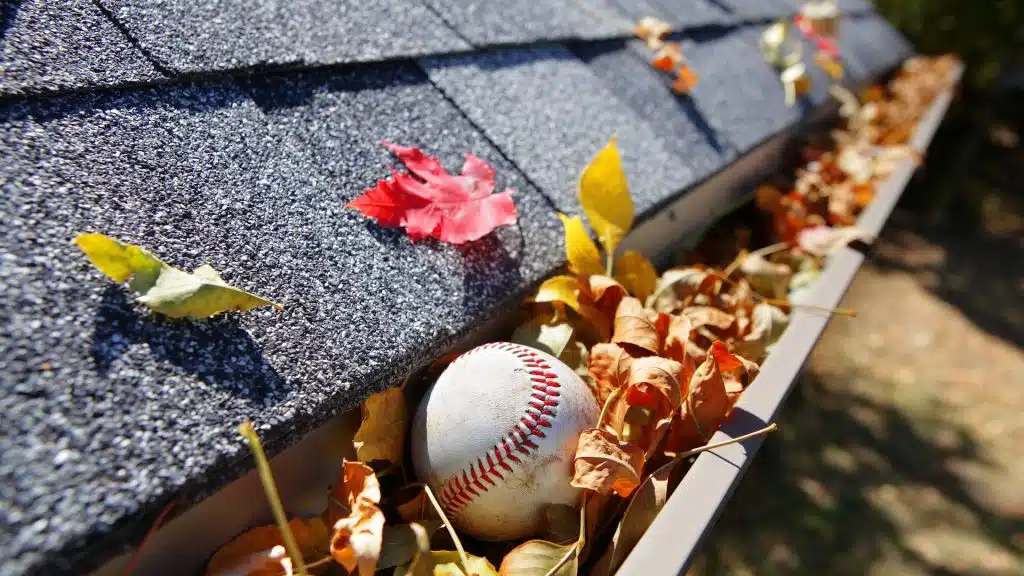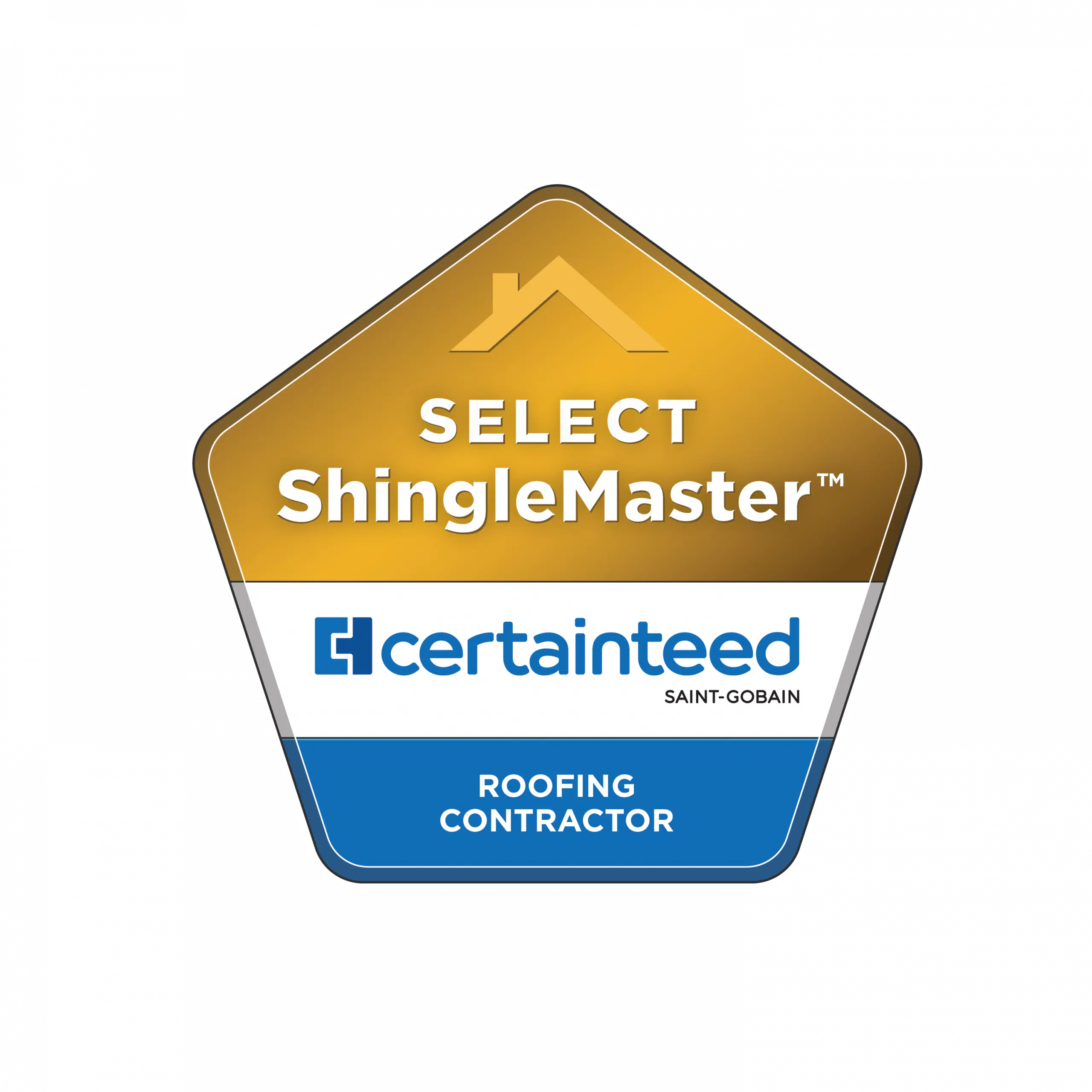
Your gutters do much more than you may give them credit for — they direct water away from your roof, prevent water damage from occurring inside along your ceiling and walls and help safeguard the foundation of your home from pooling water. Without them, your home could quickly be impacted by water leaks and wood rot that could lead to mold and many other costly problems. That’s why it’s important to de-leaf your gutters and remove debris that clogs them and prevents proper drainage.
If you’ve never cleaned your gutters before or missed a few routine inspections, let us help you get back on track with this easy guide on keeping leaves out of your gutters.
Contents
Schedule Inspections
You wouldn’t skip out on your routine car inspections, so why would you opt out of your roof and gutter inspections? Your home is your most valuable asset, so it’s important that you schedule routine gutter checks and maintenance throughout the year. Every spring, summer, and fall, you should have them cleaned out and inspected.
During these inspections, a professional will check for signs of damage or wear and tear, such as leaks, cracks, or rust. Your professional inspector should also check for blockages in the downspouts, such as leaves, twigs, and other debris that could cause water backup and lead to damage to your roof and walls.
Clean Your Gutters
Before you can prevent leaves and other debris from filling your gutters, you’ll need to clean them, especially if it’s been a while since your last round of maintenance. Here are the steps you should take:
Remove Debris By Hand
When de-leafing your gutters, first, put on heavy work gloves to ensure you’re safeguarded from handling any sharp objects that may be hiding underneath the debris. Then get a bucket and attach it to the ladder with a wire hook. Climb the ladder safely with another person holding it on the ground for additional safety, and use the garden trowel to remove any loose leaves and blockages found in the gutter. Always be careful and cautious to avoid any low-hanging wires when climbing the ladder. Safety should always be your top priority when taking on this task. In addition to using work gloves and having someone hold the ladder for you, here are some other precautions to keep in mind:
- Wear slip-resistant shoes to help prevent falls or accidents.
- Work slowly and methodically, and avoid sudden movements that could cause you to lose your balance.
- Check the weather before starting the work — you don’t want to get hit with extreme rain or high winds while outside.
- Keep a first aid kit and phone nearby in case of an accident or emergency.
Wash the Gutters
Once the loose debris has been removed, you can use a hose to wash away the remaining leaves and mud. If you own a pressure washer, you may also consider using this, but just be careful not to damage the shingles or other roofing and gutter materials. When flushing the gutters, spray the water towards the downspout and check for any clogs or standing water that may occur. If the water is not draining properly, attempt to remove blockages using a high-pressure setting or plumbing snake.
Check for Damage
Once you remove debris and flush the gutters, check for signs of damage, including the following:
- Corrosion: Check for signs of rust, especially near the screws and hangers that hold the gutters in place. Corrosion can weaken the gutter structure and make it vulnerable to damage, like bending or breaking, especially near the screws and hangers that hold them into place.
- Loose parts: The weight of debris can pull gutter spikes from the rafters, causing sagging and loosening to the rivets that hold sections together. If you discover this issue, replace the spikes and refasten the rivets with a rivet gun to ensure your gutters perform optimally.
- Holes: Inspect for holes or punctures. The presence of these can allow water to leak through, causing damage to your home’s foundation.
- Fractured Calking: Check the seams of the gutters for cracks — this may indicate that you have some fractured calking. If you discover any signs of this issue, the calking needs to be replaced. First, remove the old caulking, clean and let the area dry, and re-seal the seams to prevent water from seeping behind the gutters and rotting the wood. If you spot rust, rotting, or holes and are unsure how to fix them, call a roofing specialist to discuss repair or replacement options.
Preventing Leaf and Debris Build-Up in Your Gutters
Now that you’ve cleaned out your gutters and downspouts and addressed any structural issues, here are some ways you can prevent leaf and debris build-up in the future:
Prune Your Trees
You can avoid leaves in your gutters by regularly trimming back any trees that surround your home and stand at roof level or above. Prune them back to at least eight feet away from the eavestroughs, paying special attention to the branches that overhang the gutters. At a minimum, trim the parts of the tree that face the house. While the other side may be less of a problem, it could be a good idea to prune it anyway to maintain symmetry and reduce the leaves caught by the wind and depositing in your gutters.
Install Gutter Guards
Gutter guards are designed to help keep leaves, twigs, and other debris out. Installing a guard can also help reduce the number of times you need to perform routine cleanings. There are several types of guards on the market, including the following:
- Mesh: These are made of a mesh material made to fit over the gutter, preventing debris from entering while still allowing the flow of water.
- Reverse curve: Allows water to move along the guard and slip into the gutter while directing larger debris off the edge.
If you’re unsure about which gutter guards are best for you, talk to a professional.
Perform Regular Roof Sweeps
On top of regular gutter cleaning and maintenance, it’s a good idea to keep your roof leaf-free by climbing on top (with the proper safety equipment and support) and sweeping away debris. Visit your local home improvement store to find a roof rake that’s safe for your roofing material.
Speak to a Professional!
De-leafing your gutters and preventing future blockages is an important part of home maintenance. If you need advice or a professional to help take care of it for you, talk to us at Roofmaster. We offer a variety of roofing services to keep your home and roof protected.









